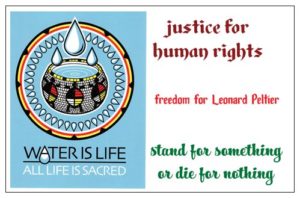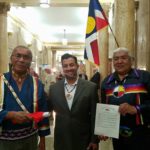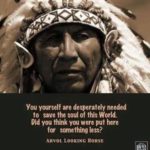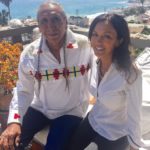16.11.2025


The Movie „The Doctrine“ in New Mexico, Alberquerque
A Movie by Gwendolin Gates with Mitch Walking Elk & Gary Farmer
Trailer link
11.07.2025 Besuch bei Mitch und seiner Familie
Mitch Walking Elk wird nächstes Jahr im Mai 2026 wieder nach Vorarlberg kommen, um uns mit seiner bezaubernden Musik mit in sein SEIN zu nehmen.
Ich werde eine Tour im Ländle organisieren und darum folgendes:
Wer nächstes Jahr Mitch Walking Elk bei sich zu Hause buchen möchte,
ist recht herzlich eingeladen mich zu kontaktieren.
PRIVAT werden seine Konzerte ein unvergessliches Erlebnis (Storytelling, ……)
Mitch Walking Elk wird einen Film über das Doctrine of Discovery herausbringen.
Das ist ein Dokument vom 15. Jahrhundert, wo bis heute noch existiert.
link für Doctrine
In diesem Dokument steht geschrieben, dass man die Indigenen ausbeuten,
unterdrücken und ihnen das Land stehlen darf.
Das Papier liegt im Vatikan.
Mitch war mit seinen Schülern vor ca. 5 Jahren beim Papst im Vatikan und hat bis heute noch keine Antwort erhalten.
Mitch hat sieben Tonträger aufgenommen und gewann
2005 den Preis für die beste Blues-Aufnahme, „TIME FOR A WOMAN“ Indian Summer Musical Festival, Milwaukee, Wisconsin und
2013 den Preis für die beste Blues-Aufnahme, „UP FROM THE ASHES“ Native American Music Awards, (NAMA OR NAMMY) Niagara Falls, New York.
We are still here 40 years of AIM
American Indians occupied Milwaukee’s Coast Guard station 50 years ago
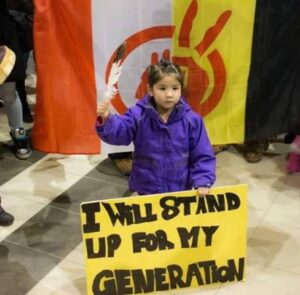 It was a uniquely successful operation
It was a uniquely successful operation
What do the Potawatomi Hotel & Casino, the Indian Community School and over $1 billion in accumulated state revenue have in common? The connections are circuitous, but all of them owe their existence to a break-in that took place 50 years ago this month.
link for the report and photos
Ancestors Waters (2019)
Ancestral Waters is a story of the Puyallup Tribes fight for their treaty,
their water and their way of life.
Native Daily Network has stood and continues to stand at the side of tribal members fighting a Liquefied Natural Gas plant that violates the Medicine Creek Treaty.
Ancestral Waters is their story.
link for the Video – please watch it
The longest walk
In 1978 11 bills were introduced in the United States Congress that if passed would have harmed American Indian sovereign rights, with the worst of the bills calling for the abrogation of all Indian Treaties. This inspired some people such as Dennis Banks and Bill Wahpepah to come up with a way of raising awareness about these bills and building support for Inidan Treaty rights. They came up with an idea for a Walk across the land from Alcatraz to Washington D.C. So on February 11th, 1978 The Longest Walk began with a Ceremony on Alcatraz where a Sacred Pipe was filled, and that Pipe was carried across the land, with staffs and other sacred items. What started as a response to anti-Indian legislation soon became an affirmation of Indigenous Sovereignty. The Longest Walk was a spiritual walk, and the prayers were felt and heard by many Indigenous Peoples, as well as other Peoples from the four directions. The same cannot be said by those in Washington DC. Although all but one of the bills did not pass, the attitude in Washington toward finding new and creative ways to diminish Indian sovereignty did not end. (continued on Pt 2)
dez. 4, 2020
Environment, Human Rights, Obama Administration
Still Fighting for Native American Rights
link for the report and the article
Eddie Benton-Banai, Co-Founder of the American Indian Movement,
Dies Aged 89
link for the report and the article
oct. 1, 2019
This 13-Year-Old Indigenous Girl Has Been Nominated for a Global Peace Prize
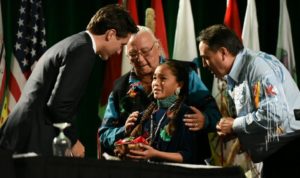
Autumn Peltier already has years of advocacy behind her. She’s met the prime minister, she’s attended the Assembly of First Nations Annual General Assembly and she’s marched on the highway in the name of water protection. At just 13 years old, Peltier is now a nominee for the International Children’s Peace Prize
link for the Report
sept. 18, 2019
8 Year-Old Mexican Girl Invents A Solar Water Heater & Wins Nuclear Science Prize

link for the Report
The youth Generations move to save the Mother Earth
sept. 4
The rights of Indigenous Peoples are key to saving our global ecosystems
may 31, 2019
Ya at teeh . . . I am running for president
Indian Country Today NEWS link
March Charles is running for President 2020
Tribute to John Trudell
“We’re too busy trying to protect the idea of a Native American or an Indian – but we’re not Indians and we’re not Native Americans.
We’re older than both concepts.
We’re the people.
We’re the human beings.”
-John Trudell

may 2019
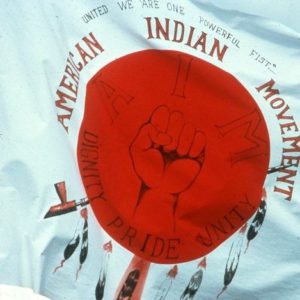
Dennis Banks:
„Every time somebody is in danger, we need to walk in that direction,” said Dennis Banks of the
Red Lake Band of Anishinaabe people.
“We can’t stop walking, because there’s pain in every direction.”
Banks organized the first Longest Walk in 1978.
The Longest Walk: We Shall Continue Route 2019
March 7-10: Eureka to Majors Place 103 miles
Mar. 10 – 24: Majors Place to Grand Junction 427 miles
Mar. 24 – Mar. 31: Grand Junction to Pueblo 286 miles
April1: Rest Day
April 2 – 7: Pueblo to Syracuse 173 miles
April 7: Syracuse to Lakin 27 miles
April 8: Lakin to Garden City 24 miles
April 9: Garden City to Cimarron 33 miles
April 10: Cimarron to Dodge City (Fort Dodge) 24 miles
April 11: Rest Day
April 12: Fort Dodge to Bucklin 22 miles
April 13: Bucklin to Greensburg 20 miles
April 14–17: Greensburg to Wichita Indian Center 109 miles
April 18-19: Rest Days
April 20-26: Wichita Indian Center to Lawrence 181 miles
April 27: Rest Day
April 28: Haskell to Bonner Springs 25 miles
April 29: Bonner Springs to Kansas City 15 miles
April 30-May 9: Kansas City to Gateway Arch 275 miles
May 10: Gateway Arch to Cahokia Mounds 9 miles
May 10-13: Cahokia Mounds Spiritual Gathering
May 14-16: Cahokia Mounds to Vandalia 60 miles
May 17-18: Vandalia to Effingham 32 miles
May 19: Rest Day
May 20-22: Effingham to Terre Haute 66 miles
May 23: Rest Day
May 24-27: Terre Haute to Indianapolis 71 miles
May 28: Rest Day
May 29-June 1: Indianapolis to Richmond 68 miles
June 2-3: Richmond to Englewood 31 miles
June 4: Rest Day
June 5-6: Englewood to Springfield 30 miles
June 7-9: Springfield to Reynoldsburg 54 miles
June 10-11: Reynoldsburg to Zanesville 43 miles
June 12: Rest Day
June 13: Zanesville to Cambridge 25 miles
June 14-16: Cambridge to Wheeling 54 miles
June 17-19: Wheeling to Fort Pitt 57 miles
June 20: Rest Day and Ceremony/History day
June 21-25: Fort Pitt to Bedford 96 miles
June 26: Rest Day/Ceremony
June 27-29: Bedford to Chambersburg 56 miles
June 30-July 1: Chambersburg to Carlisle Indian School 34 miles
July 2: Ceremony at Carlisle Indian Boarding School
July 3: Carlisle Indian School to Harrisburg (Capitol) 18 miles
July 4-5: Rest Days/Haudenosaunee
July 6: Harrisburg to York 26 miles
July 7-9: York to Baltimore 50 miles
July 10: Rest Day-Ceremony
July 11-12: Baltimore to Greenbelt Park 28 miles
July 13-14: Rest Days/ Longest Walk Manifesto Discussions
July 15: Greenbelt Park to Washington Monument 12 miles
jan. 3, 2019
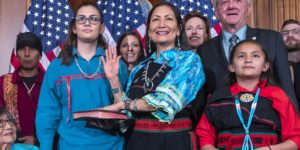
One of two first Native American women in Congress
Debra Haaland proudly highlights her Pueblo heritage.
link for the report
Times Report about the Reservation DAKOTA LAKOTA
nov. 21,2018
Human Rights – Artikel 1
Alle Menschen sind frei und gleich an Würde und Rechten geboren.
Sie sind mit Vernunft und Gewissen begabt und sollen einander im
Geist der Brüderlichkeit begegnen.
Human Rights Article 1 – english
All human beings are free and born equal in dignity and rights.
They are endowed with reason and conscience and are supposed to be
in each other Encounter spirit of brotherhood.
Human Rights – Artikel 3
Jeder hat das Recht auf Leben, Freiheit und Sicherheit der Person
Human Rights Article 3 – english
Everyone has the right to life, freedom and security of the person.
Human Rights – Artikel 4
Niemand darf in Sklaverei oder Leibeigenschaft gehalten werden;
Sklaverei und Sklavenhandel sind in allen ihren Formen verboten.
Human Rights – Article 4 – english
No one should be kept in slavery or serfdom;
Slavery and the slave trade are forbidden in all their forms.
Human Rights – Artikel 5
Niemand darf der Folter oder grausamer, unmenschlicher oder erniedrigender
Behandlung oder Strafe unterworfen werden.
Human Rights – Article 5 – english
No one should be tortured or cruel, inhuman or degrading
Treatment or punishment.
Human Rights – Artikel 6
Jeder hat das Recht, überall als rechtsfähig anerkannt zu werden.
Human Rights – Article 6 – english
Everyone has the right to be recognized as legally viable everywhere.
* The Universal Declaration of Human Rights
* Die Allgemeine Erklaerung der Menschenrechte
https://www.ohchr.org/en/udhr/pages/Language.aspx?LangID=ger
Onondaga Nation Clan Mother Audrey Shenandoah
who passed away two years ago,
spoke with Bill in 1991 about her personal kinship with nature and the
Onondaga Nation’s concerns for our Earth in a society that
„feels dominant over the elements of the creation.“
link for the Video
The longest Walk 2017
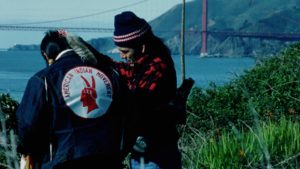
The longest walk link for the fotos
nov. 5, 2018
The United Nations wants a one-world government in less than twelve years
link fuer den Bericht
oct. 15, 2018 Paris
Chant traditionnel en honneur aux dirigeant.e.s de l’AIM qui nous ont quitté.e.s :
Anna Mae Aquash, Mary Jane Wilson, Jean Ann Day, Nilak Butler, Tina Manning Trudell, Dennis Banks,
Russel Means, John Trudell… et pour la libération de Leonard Peltier.
La Colonie – Colloque „526 ans de résistance au colonialisme“
50 ans de l’American Indian Movement (AIM) – Paris
oct. 31, 2018 UN Migration Kampagne
Kampagne gegen UN Migration von Oesterreich
Standard Bericht Zeitung
Kampagne zum Unterzeichnen link
aug. 20, 2018
Kili Radio LINK
Recently the Pipe Keeper announced that he will put away the pipe for 4 years.
This was a interview about the circumstances that led up to that decision.
United Nations Human Rights
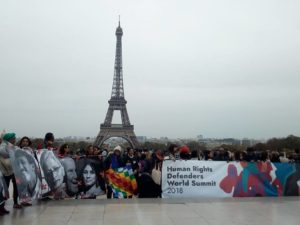
United Nations Declaration on the Rights of Indigenous Peoples
The UN Declaration on the Rights of Indigenous Peoples was adopted by the
General Assembly on 13 September 2007
The United Nations Declaration on the Rights of Indigenous Peoples (UNDRIP) was adopted by the
General Assembly on Thursday, 13 September 2007, by a majority of 144 states in favour,
4 votes against (Australia, Canada, New Zealand and the United States)
and 11 abstentions (Azerbaijan, Bangladesh, Bhutan, Burundi, Colombia, Georgia, Kenya,
Nigeria, Russian Federation, Samoa and Ukraine)
Die Erklärung der Vereinten Nationen über die Rechte indigener Völker wurde am Donnerstag,
dem 13. September, von der Generalversammlung der Vereinten Nationen angenommen.
2007 mit einer Mehrheit von 144 Staaten, 4 Gegenstimmen und 11 Enthaltungen.
Indigenous Peoples First time to UN in Geneva by Oren Lyons
In this video Chief Oren Lyons of the Onondaga Nation, tells about the first time indigenous leaders were
accepted at the UN in 1977, where they brought forward the four issues of greatest importance to the 20
million indians they were respresenting; those of nationhood, land rights, genocide and self-determination.
Then he tells about their long encounter to get recognition of the rights of indigenous peoples and how
they came to the First Decade of the World’s Indigenous Peoples.
It has been a long way for indigenous peoples to have their rights recognized internationally.
As early as in 1923 Haudenosaunee chief Deskaheh (Canada/USA) travelled to Geneva to the League
of Nations (predecessor of the United Nations) to claim the rights of his people; the right to live under their
own justice systems, on their ancestral lands and practising their own religion. However,
he was denied access.
It was not until 1977 that the doors to the United Nations finally opened to representatives of
indigenous peoples.
The international NGO convention on Discrimination against the Indigenous Peoples of the Americas gave
them access to the UN building in Geneva.
Since then, indigenous peoples have actively been working towards the international recognition of their
rights and have created an ever-growing international movement of indigenous peoples.
